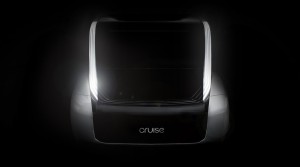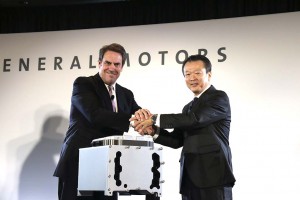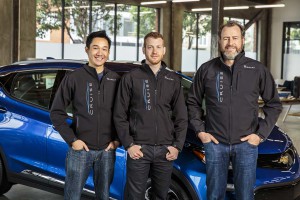
Cruise, GM and Honda will join forces to fund and develop a purpose-built autonomous vehicle for Cruise that can serve a wide variety of uses.
Honda Motor Co. will invest about $2.75 billion to enter into a partnership with General Motors aimed at developing self-driving vehicles.
That will include a $750 million investment in Cruise Automation, GM’s San Francisco-based autonomous vehicle subsidiary that was expected to launch its first product sometime next year. Together, the two carmakers plant “to develop a purpose-built autonomous vehicle for Cruise that can serve a wide variety of use cases and be manufactured at high volume for global deployment,” according to a joint statement released Wednesday.
The announcement marks the second major collaboration between GM and Honda, the two announcing in January 2017 plans to work together to develop an advanced hydrogen fuel-cell system that would be produced at a facility in suburban Detroit already assembling battery packs for use in vehicles like the Chevrolet Bolt EV.
“This is the logical next step in General Motors and Honda’s relationship, given our joint work on electric vehicles, and our close integration with Cruise,” GM Chairman and CEO Mary Barra said in that joint statement.
(GM, Honda team up to develop next-gen battery. Click Here for the story.)
At a news conference, General Motors President Dan Ammann suggested the partnership will help GM accelerate its autonomous vehicle program, adding that it would “evaluate … other partnerships and opportunities” that might rise up with Honda.

GM Global Product Development Director Mark Reuss and Honda North America CEO Toshiaki Nikishiba celebrate GM and Honda partnering on batteries.
In a fast-changing automotive world in which high-tech systems like electric propulsion and autonomous driving are becoming critical, while also requiring massive investments, partnerships like the ones between GM and Honda are becoming as much the norm as the exception. About the same time the new joint venture was announced, Daimler CEO Dieter Zetsche and Renault-Nissan-Mitsubishi Alliance CEO Carlos Ghosn were telling reporters at the Paris Motor Show that they plan to look at ways to further expand on the alliance they formed nine years ago.
The Honda-GM deal “demonstrates that global partnerships like these – Detroit, Silicon Valley and Japan – are necessary to take on these expensive ventures that likely will not return a profit in the near-term,” said Michelle Krebs, a senior analyst with AutoTrader.
Picking the right partner can be critical, however, and many such deals have fallen through in recent years.
(Click Here for details about SoftBank’s $2.25B investment into Cruise.)
“Honda chose to collaborate with Cruise and General Motors based on their leadership in autonomous and electric vehicle technology and our shared vision of a zero-emissions and zero-collision world,” said Honda Executive Vice President and Representative Director COO Seiji Kuraishi.

General Motors President Dan Ammann (right) with Cruise Automation co-founders Kyle Vogt (center) and Daniel Kan (left).
The race to bring self-driving vehicles to public roads has become particularly aggressive. Waymo, the Google spinoff, already operates a self-driving ride-share pilot program in Phoenix and has received state approval to turn it into a commercial venture that it hopes to expand to other markets during the next several years. Uber and Lyft, the leading ride-share firms, also are working on the technology.
GM is considered one of the leaders among traditional automakers working in the field of autonomous technology, in part due to its $1 billion acquisition of Cruise.
Honda will contribute $2 billion over 12 years to the joint development program, along with investing $750 million in Cruise. That follows the mid-June announcement that Japanese tech investment firm SoftBank would pump $2.25 billion of its own into the GM subsidiary.
(To see more about GM’s investments in Cruise, Click Here.)
“With the backing of General Motors, SoftBank and now Honda, Cruise is deeply resourced to accomplish our mission to safely deploy autonomous technology across the globe,” said Cruise CEO Kyle Vogt. “The Honda partnership paves the way for massive scale by bringing a beautiful, efficient, and purpose-built vehicle to our network of shared autonomous vehicles.”
